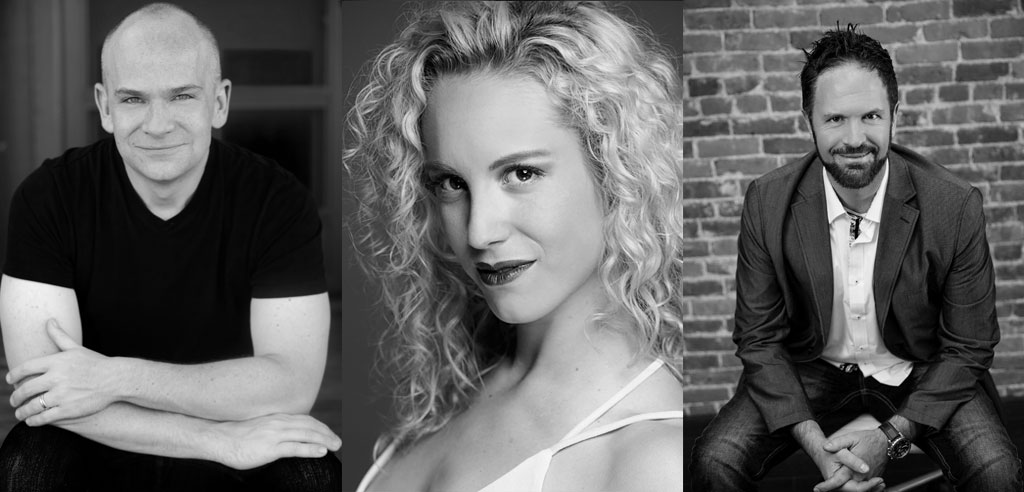The Helena Symphony continues its 65th Season on Saturday, October 19th at 7:30 p.m. in the Helena Civic Center with two popular works and two popular ballets: Tchaikovsky’s Sleeping Beauty and Carl Orff’s epic Carmina Burana. The concert features nearly 200 performers: 70 members of the Helena Symphony Orchestra, 100 singers of the Helena Symphony Chorale, 20 singers of the Helena Youth Chorus, and three soloists. Nationally acclaimed Baritone Evan Thomas Jones has appeared with the Helena Symphony Orchestra in opera performances and in concert many times, along with opera companies and orchestras around the world. Soprano Jessica Fishenfeld premiered with the HSO two seasons ago and recently made her New York City Opera and Carnegie Hall debuts. Tenor Jeffrey Kitto and Montana native (and former lead singer of the popular band The Clintons) performs the brief but comical role of a roasting bird in Carmina Burana and has performed it with the HSO before.
“Thanks to Sleeping Beauty, I feel in love with ballet,” said world renowned choreographer George Balanchine. Composed in 1888-1889 and first performed in 1890, The Sleeping Beauty was instantly loved by critics and audience. Unlike with The Nutcracker, Tchaikovsky was immediately intrigued by the storyline, and considered The Sleeping Beauty one his greatest works, and thought of it as a dancing symphony about fate and life woven from an old tale of a princess who pricks her finger and is put under a 100-years spell to be awakened by a handsome prince.
The Helena Symphony Orchestra performs a concert suite of the famous ballet, including the famous waltz, made popular by Walt Disney’s animated film version of the same story. The melancholy of Tchaikovsky’s life left its mark on many of his compositions. Much of it is ponderous and gloomy, due to the dark cast of his harmonies and orchestration. Tchaikovsky, however, had a deeply rooted love of life that also finds expression in his music, especially his ballet scores, which are vibrant with vigor, harmonic richness, and elegant beauty – all of which are on display in The Sleeping Beauty.
In 1937 (the same year JRR Tolkein wrote The Hobbit), composer and educator Carl Orff believed that his new composition Carmina Burana was remarkable enough to warrant withdrawing all of his earlier works. Today, it remains one of the most performed 20th century works and has achieved universal popularity along with hostile critical response.
“Carmina Burana has all the trademarks that the public would come to know and want: drinking, gambling, sex, and love,” says Music Director Allan R. Scott. “Musically, the work evokes the spirit of the modern age, yet made modern by the sheer animal strength of the repeated phrases and driving rhythms, joining themselves to ancient folk and jazz characteristics.”
Carmina Burana, itself, is a scenic, secular cantata based on 13th century anonymous poems and songs in Latin and high-middle German which were discovered in a Bavarian monastery in 1803. The manuscript employed scholarly verses and parodies of sacred texts, including love songs and seemingly offensive tunes. Orff set twenty-four of these poems to music, dividing them into three categories devoted to spring, the tavern, and love, framed by an appeal to the power of fortune. Other moments of the mega-fantasy deal with humankind’s encounter with nature, with the joys of drinking, and with the bliss of love, particularly the secular pleasures of romance. Carmina Burana presents all that the Christian world between the 11th and 12th centuries was capable of expressing. That age was not partitioned like today nor was it inhibited by taboos – an entire cosmos wherein good does not exist without evil, faith without curses and doubts.
“Carmina Burana (literally meaning, “the songs of the Beurens”) pays tribute to a world that thrives off desire and love and their ability to enable man to live, struggle, and believe; a world that does not fear to contradict itself and pour out its heart with equal intensity at all levels of its conscious,” explains Maestro Scott. “Whether experienced as a ballet or in concert, Carmina Burana continues to maintain its chilling and hypnotic effect on admirers of all generations (even when they are not familiar with the work itself), proving that besides the ear of the “civilized” man there exists another ear – a greedy, barbaric one that cries for its food, drink, desire, lust, risks, and fate.”
Single concert tickets can be purchased ($55-$15 plus a $5 transaction fee) online at www.helenasymphony.org, by calling the Symphony Box Office (446.442.1860), or visiting the Symphony Box Office located on the Walking Mall at the Livestock Building (2 N. Last Chance Gulch, Suite 1) between 10 a.m. and 4 p.m. Tickets for other Masterworks Concerts and the remaining Non-Series Concerts, Mozart by Candlelight and Christmas in the Cathedral, are also on sale and selling fast.
Maestro Scott and guest artists are available for interviews by contacting the Symphony Office at 406.442.1860 or [email protected].

